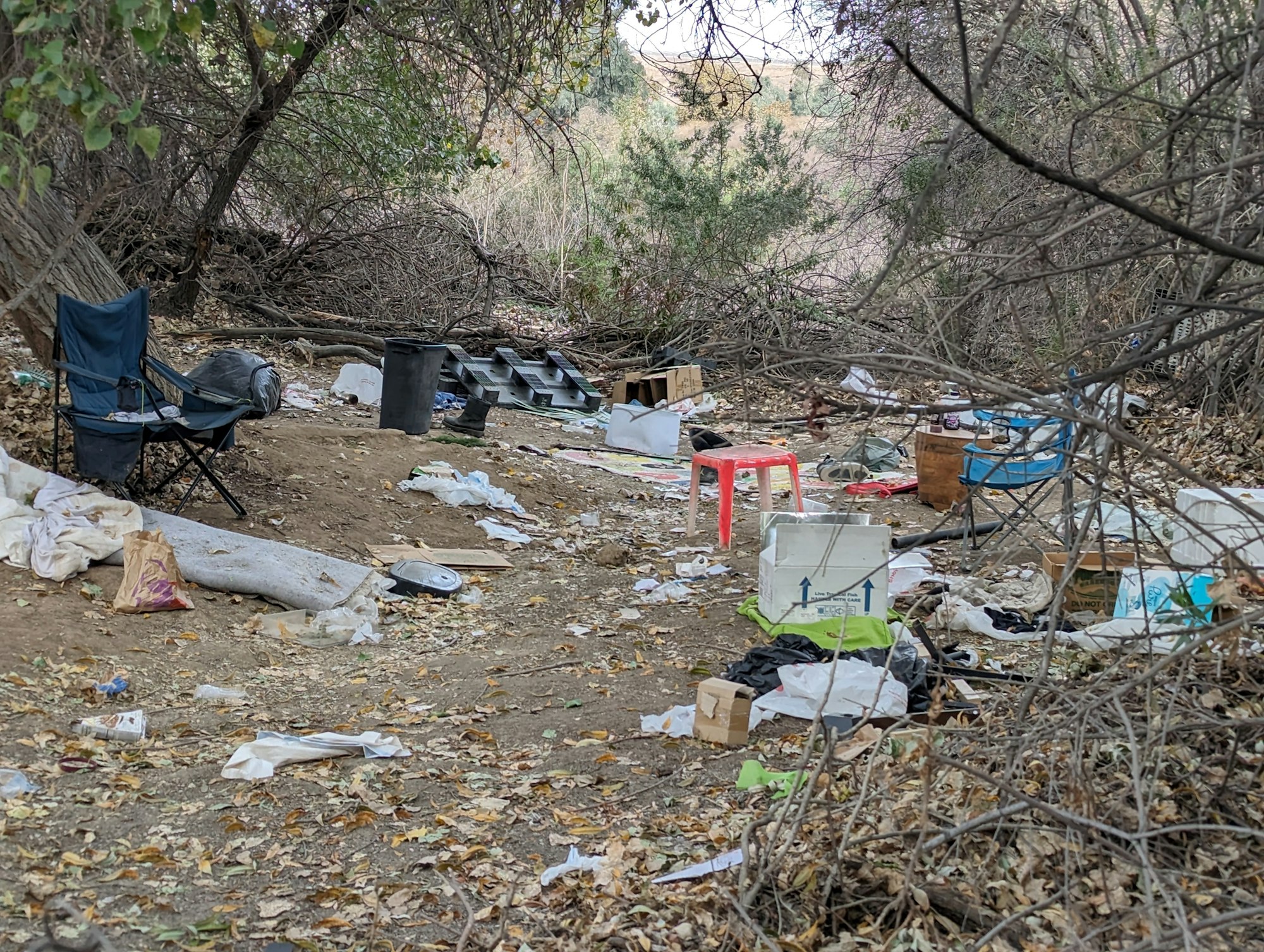Threats to Habitat
The Riverside-Corona Resource Conservation District (RCRCD) restores, enhances, and preserves habitat within the District service area to repair damage caused by and protect from, various threats. These threats include damage from activities such as illegal dumping of trash and clearing and removal of vegetation, and from disruption caused by invasive plants and animals.

Dumping of large items and trash accumulation damage habitat by harming plants and animal burrows these items cover, trapping animals that can get tangled in some items, and can introduce toxins to the system. They can also be hazardous to the staff who maintain the habitat in the area. RCRCD routinely removes trash and dumped items from lands it manages. Where there are hazardous waste concerns, RCRCD contracts out with a specialized hazardous waste clean up company.
Unauthorized vegetation clearing or removal can damage habitat by the fact that it is actually removing the habitat itself. Living vegetation, thatch, mulch, and dead wood are all habitat features used by plants and animals, so removing them can cause harm. RCRCD repairs this damage through habitat restoration. RCRCD also works with local agencies to conduct fire prevention activities where necessary without significant damage to habitat on RCRCD lands. This often involves selective removal of non-native invasive plants from the habitat.
Invasive species can damage habitat by out competing and displacing native species. Healthy habitats generally have a wide variety of native species that live in a balance with one another. Invasive species disrupt that balance by either taking over an area or by directly harming native species. RCRCD repairs this damage through weed removal and applying best practices to map and remove invasive animal species such as the shot hole borer beetle. RCRCD keeps staff up to date on invasive species concerns and best management methods, as well as partnering with agencies researching these species where applicable.
